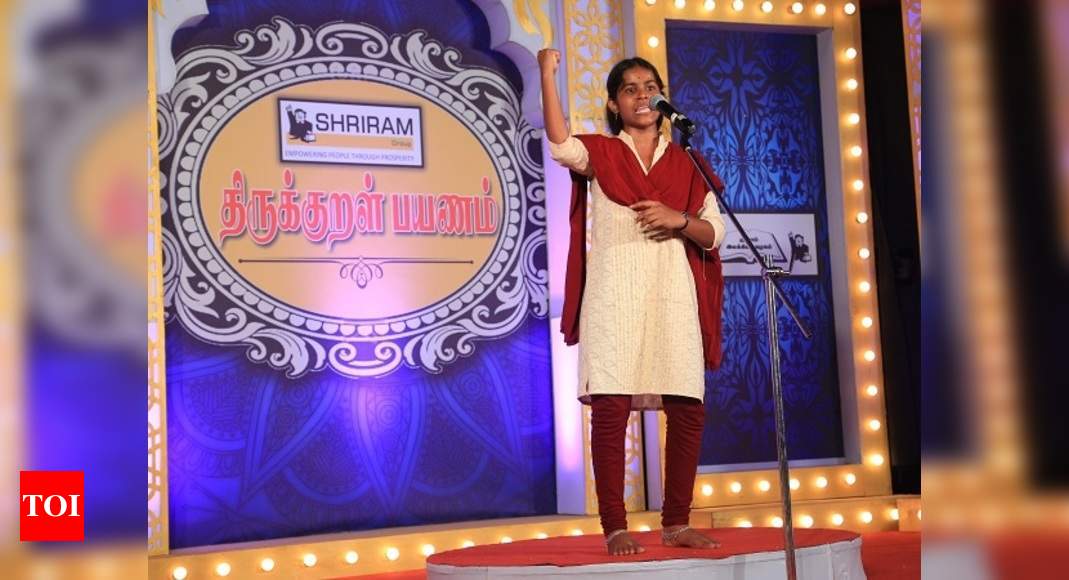

But they implicitly understood that these women were not demanding dowry but an equal share in the family property. Because if it was dowry, most men would only be glad to receive a bigger share, without them having to directly demand it. This also explains the backlash these women received from unknown men on social media.

And that is what these young women were arguing for. On the other hand, a transaction between a daughter and her father can be a claim for the family wealth. Dowry by its very nature is a transaction between two men and can never be a transaction between a daughter and her father. And they were trying to do it at a point when the resistance from the family would be the lowest. So, if we re-look at the arguments made by the young women in the ‘Neeya Naana’ show through the above perspective, we can understand that these women were not demanding dowry, but an equal or a closer to equal share in the family wealth.

In fact, this is the only circumstance where the patriarchal society cedes to the woman’s demands to some extent. But if we put these two situations together, it interestingly gives an opportunity for daughters to negotiate and claim a share of their family wealth during the process of marriage and dowry transaction. Two, the society doesn’t allow daughters to claim an equal share in the family wealth. And looks at dowry as an indicator of economic status and a matter of pride. One, the society glorifies the institution of marriage and family. The above stated realities lead us to two distinct situations. Owing to these reasons, the daughters often don’t claim more than what they are offered by the men in the family. In addition, the relationship with the brothers undergoes an irreversible damage post this confrontation. If by chance, the daughters choose to confront their brothers for an equal share, they are labeled as ‘selfish’ and ‘greedy’. But if we have to look at the quantum of what the daughters receive, it remains miserably smaller, even in highly educated and progressive families. The second occasion is when the sons formally receive their share - the daughters too are given a small consolation share at this point. The first occasion is during her wedding – in the form of dowry. What the daughters receive from the family wealth primarily takes place during two occasions. But in reality, most daughters receive only a small share compared to the sons. The Hindu Succession (Amendment) Act, 2005 allows the daughters to receive an equal share in the family property as the sons. Only when it falls far away from that level, it causes conflicts between the two families. Most Indian families do not resist the idea of dowry as long as it falls within the ‘agreeable dowry level’. Within every community, based on the economic status of the family, there is an implicit ‘agreeable dowry level’. Dowry is often given in visible forms and is supposed to be a matter of pride to both the giver – the bride’s father and the receiver – the groom. Even among communities of similar position in the caste hierarchy, some are cited to be heavy dowry givers or takers, while some others are not. The quantum and the variety that makes up the dowry is a function of the caste and the class the families belong to. Even though the woman is celebrated under these three circumstances, she has very little control over any of these.ĭuring the process of marriage, dowry involves parting of wealth from the bride’s father to the groom. Marriage often remains a glorified endogamous transactional process that takes place between two men, the bride’s father and the groom. Pregnancy is a biological process that is aggressively glorified and encouraged by the society to ensure the continuation of the institution of family. Puberty is a natural biological process where both the girl and the society have very little say, except maybe in ensuring the girl’s nutritional intake and thereby aiding the attainment of puberty on time. One, when she reaches puberty, two, when she is marrying a man within her caste and three, when she is pregnant. Our patriarchal caste society celebrates a woman only during three circumstances. There are of course people actively experimenting and finding alternate support systems, but they only form a minuscule minority. Also, marriage and family continue to function as the primary support system for both men and women. While we might have numerous arguments against marriage, we cannot ignore the fact that it continues to exist as a strong institution and is able to engulf young men and women inside it, irrespective of their educational status or economic freedom. Marriage as an institution is built on caste and patriarchy.


 0 kommentar(er)
0 kommentar(er)
